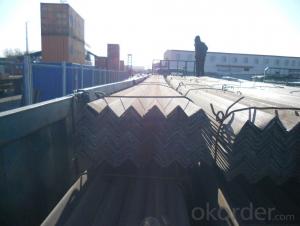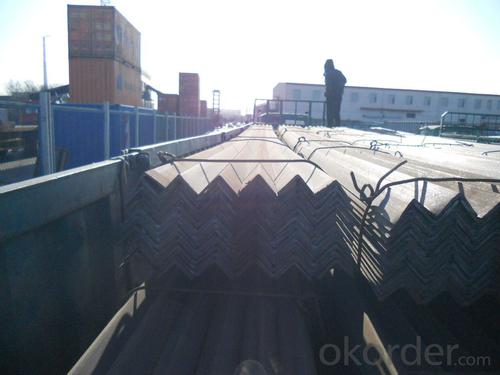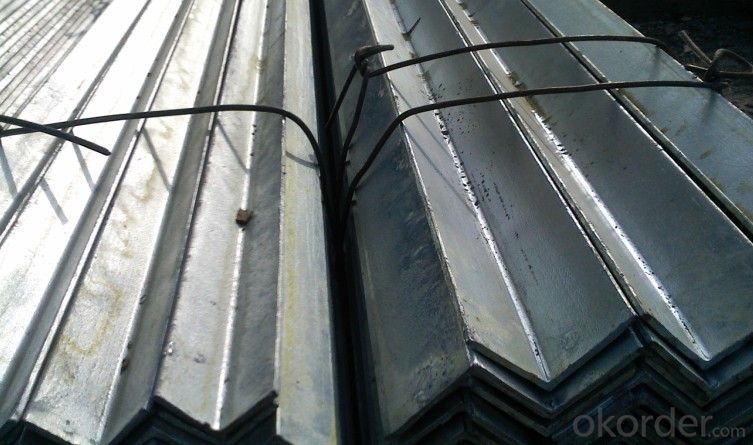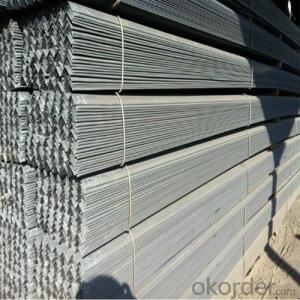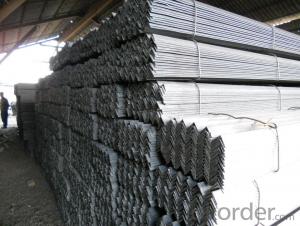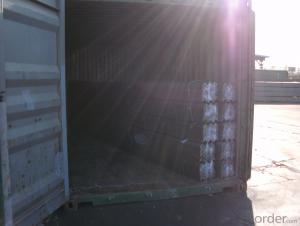Q345 Q235 equal angle steel bar AISI,ASTM,BS,GB,JIS
- Loading Port:
- Tianjin
- Payment Terms:
- TT OR LC
- Min Order Qty:
- 35 m.t.
- Supply Capability:
- 40000 m.t./month
OKorder Service Pledge
OKorder Financial Service
You Might Also Like
Specifications
1.angle steel
2.Dimensions: 20-250mm
3.Reasonable price
4.Honest attitude
5.Certificates:BUV,TUV
Company Information :
Our company is devoted to the construction of the stainless steel industry, We sincerely provide customers with quality services . Now, our products sell well in more than 20 countries and regions .
We believe that where there is a will there is a way,we assure you of a low price and the most satisfactory services.
Product Description :
Specifications
Mild angle steel
1.size: 2#--20#
2.material: Q235B,SS400,ST37-2,S235JR
3.length:6m--12m
4.Chinese standard
Specification
| Weight (kg/m) | Specification
| Weight |
25*25*3 | 1.124 | 90*90*8 | 10.946 |
25*25*4 | 1.459 | 90*90*10 | 13.476 |
30*30*3 | 1.373 | 100*100*6 | 9.366 |
30*30*4 | 1.786 | 100*100*7 | 10.83 |
40*40*3 | 1.852 | 100*100*8 | 12.276 |
40*40*4 | 2.422 | 100*100*10 | 15.12 |
40*40*5 | 2.976 | 100*100*12 | 17.898 |
45*45*3 | 2.088 | 110*110*7 | 11.928 |
45*45*4 | 2.736 | 110*110*8 | 13.532 |
45*45*5 | 3.369 | 110*110*10 | 16.69 |
50*50*3 | 2.332 | 110*110*12 | 19.782 |
50*50*4 | 3.059 | 125*125*8 | 15.504 |
50*50*5 | 3.77 | 125*125*10 | 19.133 |
50*50*6 | 4.465 | 125*125*12 | 22.696 |
63*63*5 | 4.822 | 125*125*14 | 26.193 |
63*63*6 | 5.721 | 140*140*10 | 21.488 |
63*63*8 | 7.469 | 140*140*12 | 25.522 |
70*70*5 | 5.397 | 140*140*14 | 29.49 |
70*70*6 | 6.406 | 160*160*10 | 24.729 |
70*70*7 | 7.398 | 160*160*12 | 29.391 |
70*70*8 | 8.373 | 160*160*14 | 33.987 |
75*75*5 | 5.818 | 160*160*16 | 38.518 |
75*75*6 | 6.905 | 180*180*12 | 33.159 |
75*75*7 | 7.976 | 180*180*14 | 38.383 |
75*75*8 | 9.030 | 180*180*16 | 43.542 |
75*75*10 | 11.089 | 180*180*18 | 48.634 |
80*80*6 | 7.376 | 200*200*14 | 42.894 |
80*80*7 | 8.525 | 200*200*16 | 48.68 |
80*80*8 | 9.658 | 200*200*18 | 54.401 |
80*80*10 | 11.874 | 200*200*20 | 60.056 |
90*90*6 | 8.35 | 200*200*24 | 71.168 |
90*90*7 | 9.656 |
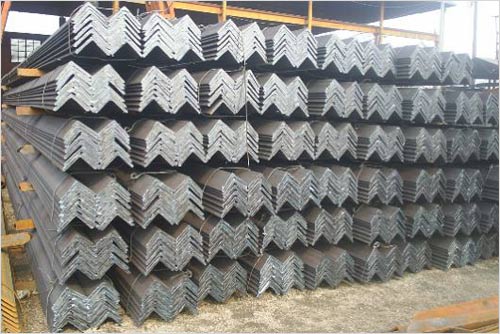
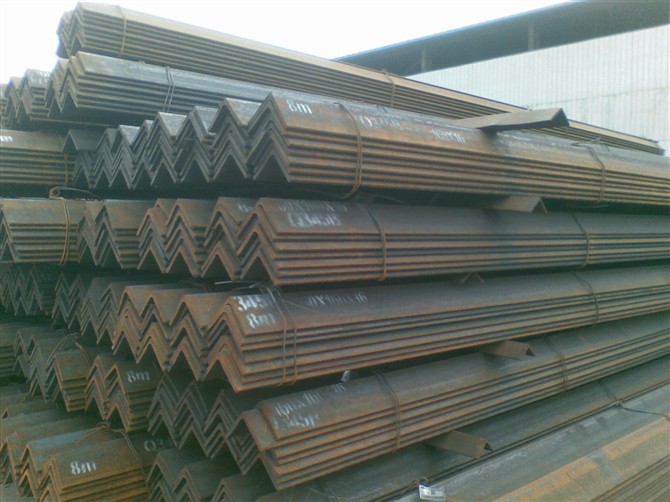
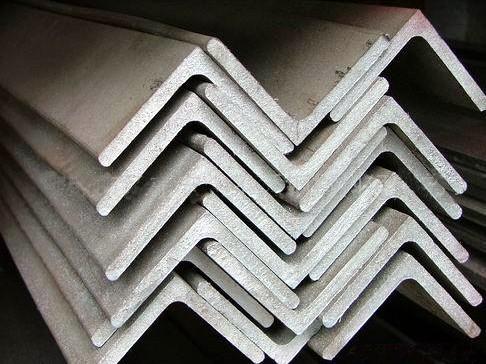
- Q: Can steel angles be customized or fabricated to specific requirements?
- Yes, steel angles can be customized or fabricated to specific requirements. Steel angles are versatile and can be easily modified to meet different specifications and applications. Fabrication processes such as cutting, drilling, welding, and bending can be used to customize steel angles to the desired shape, size, and dimensions. This allows for the creation of steel angles with specific lengths, thicknesses, and angles to meet the unique requirements of different construction or engineering projects. Customized steel angles can be used in various applications, including structural framing, supports, brackets, reinforcements, and architectural designs. Overall, steel angles offer flexibility in customization and fabrication, making them suitable for a wide range of construction and industrial needs.
- Q: How do you determine the required angle size for a specific application?
- Several factors must be taken into consideration in order to determine the necessary angle size for a specific application. First and foremost, it is crucial to understand the purpose or function of the application. Different applications may require different angle sizes depending on the desired outcome. For instance, if the application involves cutting or shaping materials, the angle size must be determined based on the desired level of precision or detail. Secondly, the materials used in the application must be carefully considered. Some materials may be more brittle or prone to damage, while others may be more flexible. The chosen angle size should take into account the properties of the materials and minimize the risk of damage or failure. Thirdly, the specific conditions or environment in which the application will be used should be taken into account. Factors such as temperature, pressure, or moisture levels can impact the performance of the application and influence the required angle size. It is essential to select an angle size that can withstand the expected conditions and provide optimal functionality. Furthermore, consulting industry standards or guidelines that may exist for the specific application can be beneficial. These standards often provide recommended angle sizes based on best practices and past experiences. They serve as a useful reference point in determining the required angle size. Lastly, it may be necessary to conduct testing or simulations to verify the selected angle size. By creating prototypes or using computer-aided design (CAD) software, one can evaluate the performance and effectiveness of different angle sizes before making a final decision. In conclusion, determining the necessary angle size for a specific application involves considering the purpose, materials, environmental conditions, industry standards, and potentially conducting testing or simulations. By analyzing these factors, one can make an informed decision and select the most suitable angle size for the application.
- Q: Can steel angles be used for sound barriers?
- Yes, steel angles can be used for sound barriers. Steel angles are commonly used in construction and can be suitable for sound barrier applications due to their durability, strength, and ability to absorb and block sound.
- Q: How does the price of steel angles vary based on size and grade?
- The price of steel angles can be affected by various factors, including the size and grade of the steel. When it comes to the size, larger angles are generally more expensive than smaller ones. This is because larger angles require more raw material and involve more manufacturing processes, resulting in higher production costs. As a result, as the size or length of the angle increases, so does its price. The grade of the steel also plays a role in determining the price. Steel angles come in different grades, each with its own characteristics and properties. Higher-grade steel angles, such as stainless steel or structural steel, tend to be more expensive compared to lower-grade options like mild steel. This is because higher-grade steels often require more advanced manufacturing techniques and superior quality raw materials, which contribute to higher production costs and, consequently, a higher price. Other factors that can impact the price of steel angles include market demand, the availability of raw materials, and manufacturing efficiency. Fluctuations in demand and supply can lead to price variations, with higher demand usually resulting in higher prices. Additionally, the availability and cost of raw materials used in the production of steel angles, such as iron ore and scrap metal, can affect the overall price. Lastly, advancements in manufacturing processes and technology can increase efficiency, potentially lowering production costs and influencing the final price of steel angles. To summarize, the price of steel angles is influenced by their size and grade. Larger angles and higher-grade steels tend to be more expensive due to increased production costs. Market demand, raw material availability, and manufacturing efficiency also play a role in determining the price of steel angles.
- Q: What are the different connection methods for steel angles?
- Some of the different connection methods for steel angles include welding, bolting, and using mechanical fasteners such as screws or rivets. These methods are used to join steel angles together or to connect them to other structural elements. The choice of connection method depends on factors such as the load requirements, the design specifications, and the ease of installation.
- Q: How are steel angles installed or fixed in place?
- Steel angles are widely utilized in construction to supply structural support and reinforcement, with their installation or fixation employing various techniques based on the particular application and project requirements. One prevalent approach to installing steel angles is through welding, whereby the angles are permanently fused to the desired location using a welding machine. This method guarantees a robust and long-lasting connection that keeps the angles securely in place, even when subjected to substantial loads or vibrations. However, welding necessitates skilled labor and specialized equipment. Another technique involves bolting, whereby steel angles are affixed to the supporting structure using bolts or screws. This method allows for effortless installation and removal, making it suitable for situations requiring adjustments or modifications. Bolting also offers flexibility in terms of repositioning or replacing the angles if necessary. In certain instances, steel angles are attached to the structure using adhesive bonding, which entails applying a sturdy adhesive material between the angle and the supporting surface. Adhesive bonding proves particularly advantageous when welding or bolting is impractical or undesired. However, it is crucial to ensure that the adhesive employed is suitable for the specific application and capable of withstanding the loads and environmental conditions. Furthermore, a combination of methods can be employed to install steel angles. For instance, welding can serve as the primary attachment, while bolts or adhesive bonding can be employed as secondary supports or reinforcements. Consulting structural engineers or professionals is essential in determining the most appropriate method for installing steel angles, taking into account the project's unique requirements, load conditions, and local building codes. Proper installation guarantees that the angles are securely fixed in place, delivering the necessary strength and stability to the structure.
- Q: Are there any limitations or restrictions on the use of steel angles in certain applications?
- Indeed, certain applications impose limitations and restrictions on the utilization of steel angles. One such limitation pertains to the maximum load-bearing capacity of these steel angles. Depending on factors like size, thickness, and quality, their ability to support heavy loads may be limited. Consequently, in scenarios requiring high strength and load-bearing capacity, alternative structural members like steel beams or columns may be more suitable. Another restriction concerns the suitability of steel angles for specific shapes or configurations. Generally L-shaped, steel angles are versatile and commonly employed across various applications; however, they may not be ideal for intricate or curved designs. In such instances, custom-shaped structural members or different materials may prove more appropriate. Furthermore, the corrosion resistance of steel angles poses limitations in certain environments. Steel is vulnerable to rust and corrosion, particularly in marine or highly humid conditions. To combat this, additional protective measures such as coatings or the use of stainless steel angles may be necessary in applications where exposure to moisture or corrosive substances is inevitable. Lastly, the fabrication and installation processes for steel angles can also impose limitations. Often necessitating welding, cutting, or drilling during fabrication, these procedures can present challenges in applications requiring precision and specialized equipment. Additionally, the size and weight of steel angles may hinder transportation and installation, particularly in restricted spaces or areas with limited access. Given these limitations and restrictions, it is crucial to carefully consider them when selecting steel angles for specific applications. This ensures that the chosen steel angles meet the required strength, shape, corrosion resistance, and installation specifications.
- Q: How do you reinforce a steel angle for added strength?
- To reinforce a steel angle for added strength, there are several techniques you can employ. One common method is to weld additional steel plates or gussets to the angle's flanges. These plates or gussets are typically positioned perpendicular to the angle and are welded along their edges to create a stronger connection. This helps distribute the load and enhance the structural integrity of the angle. Another approach is to bolt or rivet additional steel plates or angles to the existing one, creating a sandwich-like structure. These additional plates or angles can be positioned on either side of the existing angle or even on top, depending on the specific requirements. Bolting or riveting them together ensures a secure connection and reinforces the angle's overall strength. Furthermore, reinforcing a steel angle can also be achieved by employing bracing techniques. This involves adding diagonal steel members, often referred to as braces, to the angle. Braces are typically attached to the angle at multiple points using welding or bolting methods. These braces help redistribute the forces acting on the angle and prevent excessive deflection or bending, thereby increasing its strength. It is important to note that the specific reinforcement method chosen depends on factors such as the load or force the angle will experience, the desired level of strength, and the available resources. Consulting with a structural engineer or a professional in the field is highly recommended to ensure the appropriate reinforcement technique is selected and implemented correctly.
- Q: Are steel angles suitable for manufacturing support brackets for conduits?
- Yes, steel angles are commonly used for manufacturing support brackets for conduits due to their strength, durability, and ability to provide structural support.
- Q: Can steel angles be used as bracing elements in buildings?
- Bracing elements in buildings can indeed consist of steel angles. These angles are frequently utilized in construction due to their impressive strength and versatility. Their primary function is to provide lateral stability and support to structures, making them essential structural components. By utilizing steel angles as bracing elements, buildings become capable of withstanding horizontal forces like wind or seismic activity, thus preventing excessive movement or deformation. These angles are typically placed at strategic points, such as corners or intersections, and can be securely connected to other structural members using bolts or welds. The preference for steel angles as bracing elements is justified by their advantageous features, including a high strength-to-weight ratio, durability, and ease of installation. Therefore, it can be confidently stated that steel angles are a reliable and commonly employed solution for bracing elements in buildings.
Send your message to us
Q345 Q235 equal angle steel bar AISI,ASTM,BS,GB,JIS
- Loading Port:
- Tianjin
- Payment Terms:
- TT OR LC
- Min Order Qty:
- 35 m.t.
- Supply Capability:
- 40000 m.t./month
OKorder Service Pledge
OKorder Financial Service
Similar products
Hot products
Hot Searches
Related keywords
